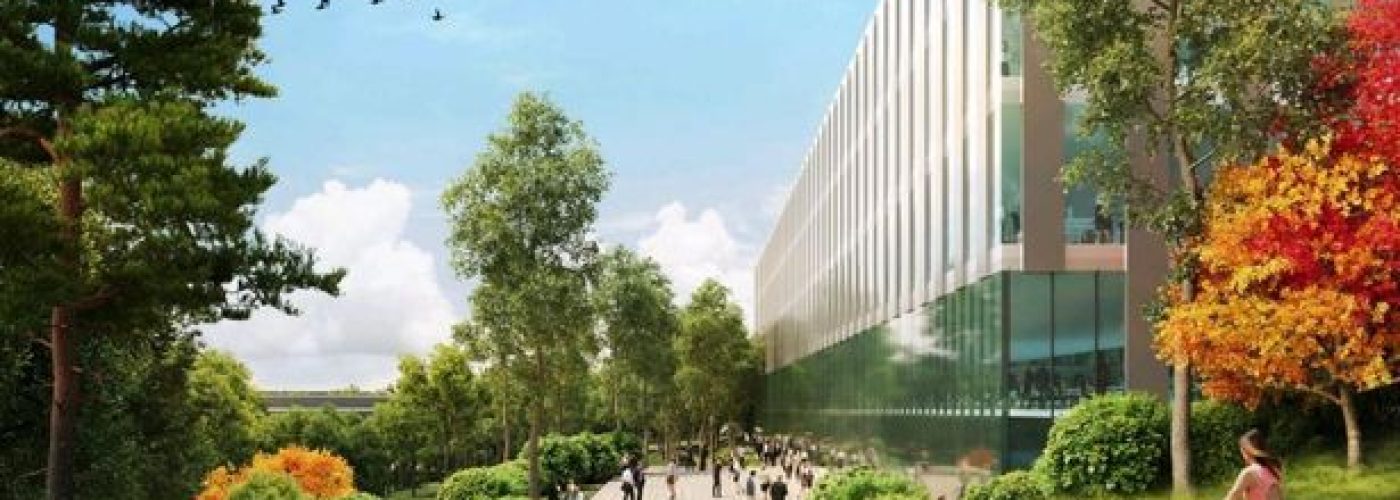U+I have been given support by Tunbridge Wells Borough Council to transform 30 acres of unused land in Kent into a thriving new green business community that will address a severe shortfall of office and industrial provision in the area.
Kingstanding, located 3.5 miles from Tunbridge Wells town centre, will comprise flexible, high-quality employment and industrial space to cater for a variety of different businesses. The buildings will be set within a beautiful parkland to create an inspiring place for people to work post-Covid, with sustainability and wellbeing at the forefront of the design.
The scheme, which has been designed by Scott Brownrigg, sits on underused greenbelt land and will centre on a reinvigorated pond, itself surrounded by the ancient woodland of King’s Standing – providing biodiversity net gain and a tranquil environment for employees.
Tunbridge Wells has been losing office and industrial floor space at a rate that exceeds regional averages. Consequently, vacancy levels of both office and industrial space are very low, with the shortfall compounded by limited new development activity.
In line with the council’s economic needs study – which noted the requirement for at least 14ha of additional employment land up to 2033 – Kingstanding will alleviate the shortage in office and distribution space and stimulate economic growth. This will be encouraged further by an allocation in the emerging local plan.
U+I’s proposals will see the delivery of nearly 800,000 sq ft of flexible warehouse and office accommodation on a well connected site. It is easily accessible by car, bus and train, while cycling from Tunbridge Wells town centre will take around 16 minutes.
The new offices will be situated around the perimeter of the site, with new warehousing units concentrated in the north-west corner. Buildings will be positioned adjacent to woodland and other key landscape features to allow the occupiers immediate access to nature and other outdoor amenities.
The name Kingstanding is inspired by the ancient woodlands surrounding the site, which once served as hunting grounds for Gilbert de Tonbridge, an Anglo-Norman nobleman of the 11th century.





